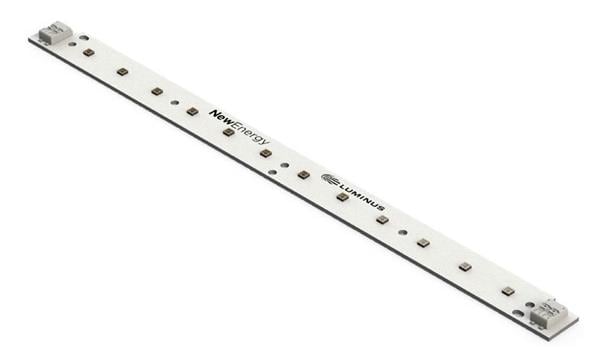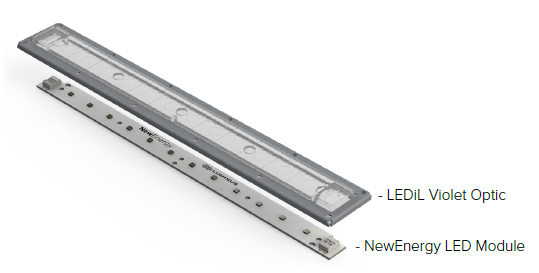With the pandemic, applications using ultraviolet C (UVC) LEDs have become more frequent with the introduction of various sterilization and purification devices on the market. In this article, we focus on a type of component that has become important and that can be the basis for new projects. The ultraviolet C LED bar we are dealing with can be obtained from Mouser Electronics at the link that we will give at the beginning of the article.
Note: We have written this article based on the datasheet of the New Energy Linear UVC Module, available at Mouser link https://br.mouser.com/ProductDetail/New-Energy/
As we have already covered in several articles on our website, ultraviolet C radiation has bactericidal properties and can be used in disinfection and purification.
Disinfection devices using LED bars are already available on the market, as well as types for sterilizing water, food and medicines.
The type presented by New Energy consists of a strip of ultraviolet LEDs already interconnected capable of operating with a maximum power of 72 W. In figure 1 we have the appearance of the device that measures 28.1 cm.

We note that this rule must have optical resources to concentrate the emitted radiation. In the figure we have the lens for ultraviolet, remembering that in the wavelength used it is necessary to have special materials in its manufacture.

Wavelengths are available in two ranges: 275 to 280 nm and 280 to 285 nm.
The currents can be between values of 700 mA 1 600 mA which results in powers from 21 to 72 W. In figure 3 we have the ways in which the ultraviolet LEDs are connected in the modules.

Among the applications suggested by the manufacturer are surface sterilization, water disinfection, air purification, skin therapy, fluorescent analyzers, food preparation and horticulture.
New Energy makes available its support to help in the development of new projects.
For more information we suggest consulting the available technical documentation or the manufacturer itself.



